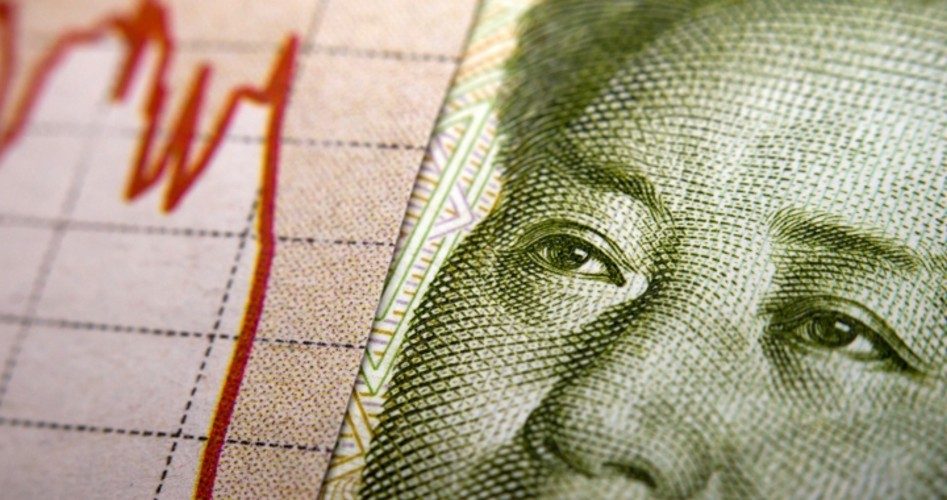
A popular online meme perfectly expresses where China’s economy is headed: “The year 2019 may be the worst year in this decade, but it will be the best year in the next decade.”
China’s economy is decelerating so rapidly that the super-rich are getting out while the getting is good. One of them is Chen Tianyong, a real estate developer in Shanghai, who posted this on the Internet: “China’s economy is like a giant ship heading to the precipice. Without fundamental changes, it’s inevitable that the ship will be wrecked and the passengers will die. My friends, if you can leave, please make arrangements as early as possible.”
As the New York Times noted, “It is unclear how many saw the article before it disappeared from China’s heavily-censored internet,” but some no doubt are doing what Tianyong did. He moved to the island of Malta.
In his speech that opened the annual session of China’s rubber-stamp parliament on Tuesday, China’s Number Two communist, Li Kegiang, was surprisingly forthright: “In pursuing development this year we will face a graver and more complicated environment as well as risks and challenges … that are greater in number and size. We must be fully prepared for a tough struggle.”
A big problem facing China is that its economy is run by American-trained Keynesians who think an economy can be manipulated into good health with borrowed or created money. Twenty years ago, following China’s acceptance into the World Trade Organization (WTO), the communist leaders saw their opportunity, and they took it. Following cheap labor and cheap money, jobs poured out of the United States and into China, resulting in astounding economic growth for the latter. While the economic numbers issued by China’s state-controlled media are always suspect, there was no denying that after those past two decades, the previously third-world China now boasts the world’s second-largest economy.
It also boasts a national debt that is more than three times the country’s entire annual economic output. When Chinese leader Xi Jinping took over the communist apparatus in 2012, he began to implement harsher controls over the runaway economy. Three years later, he installed still more controls in the banking system in an attempt to rein in the runaway debt that had financed the economy.
China’s economy lost momentum following Xi’s efforts to crack down on risky lending, which had starved many companies of the funds they needed to keep growing. Last November, two months before the country’s Lunar New Year (February 5), companies in the country’s technology and export-manufacturing center of Shenzhen began laying people off, claiming the move was merely temporary. Owners called it a “furlough.” Many of those workers remain out of work.
Today, China not only is faced with a diminishing demand for its goods; it has to account for Donald Trump. While a U.S.-China trade deal remains under negotiation, China’s economy continues to falter. According to “official” government figures, last year the economy grew by 6.6 percent, the lowest in three decades. For 2019, official forecasts are coming in at between six and 6.5 percent.
Anecdotal evidence of China’s slowdown is showing up in declines in big-ticket investments, in real estate sales, and in industrial output.
So Xi is caught in the middle: He wants to restart the economy to keep his 800 million workers employed and away from protests, but he fears adding to his government’s enormous debt load. He has begun the process heralded by Keynesians the world over: higher spending on infrastructure projects such as highways and bridges, looser monetary policy by reducing reserve requirements on the banking system, and tax cuts.
According to a paper published in January by Hurun Report, a Shanghai-based research firm, barely one-third of the superrich Chinese it surveyed said they were “very confident” about China’s economic future. Two years ago, that same survey showed that two-thirds of that wealthy cohort was “very confident.” Put another way, those holding sanguine views of China’s economy have fallen by half in just two years.
Those having “no confidence at all” in China’s economic future doubled, from seven percent to 14 percent. And nearly half said they were considering doing what Tianyong did, or had already started the process.
While the official numbers paint a relatively rosy picture, it’s clear that at the top of the communist superstructure running the country, management is in panic mode.
Image: claffra via iStock / Getty Images Plus
An Ivy League graduate and former investment advisor, Bob is a regular contributor to The New American and writes primarily on economics and politics. He can be reached at [email protected].



